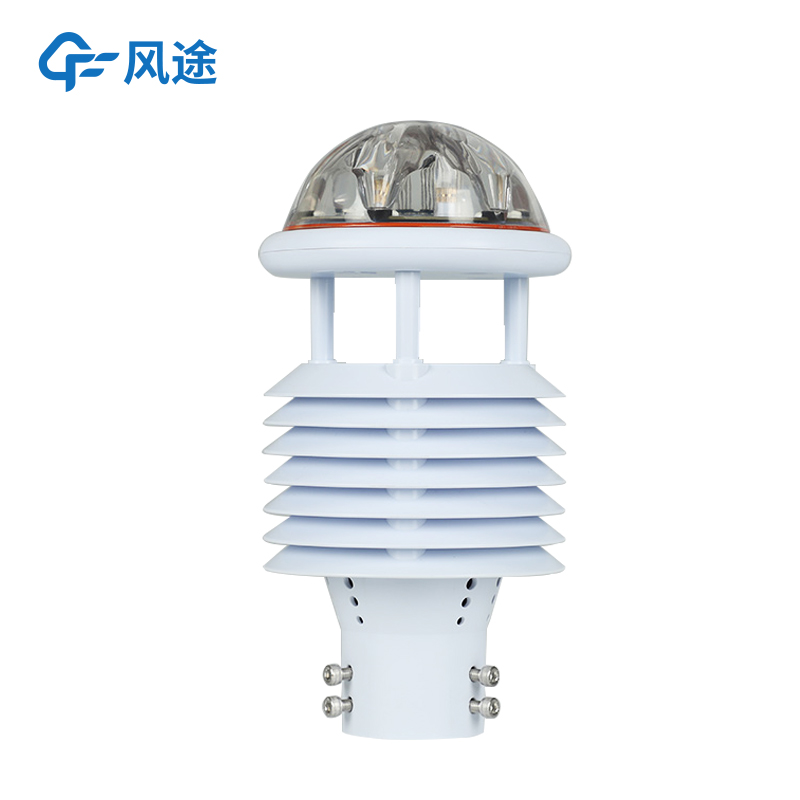Tianyi Sensor IOT Technology Co., Ltd
Sales Manager:Ms. Emily Wang
Cel,Whatsapp,Wechat:+86 15898932201
Email:info@fengtutec.com
Add:No. 155 Optoelectronic Industry Accelerator, Gaoxin District, Weifang, Shandong, China

Sales Manager:Ms. Emily Wang
Cel,Whatsapp,Wechat:+86 15898932201
Email:info@fengtutec.com
Add:No. 155 Optoelectronic Industry Accelerator, Gaoxin District, Weifang, Shandong, China
time:2025-10-22 09:04:15 source:Weather Station viewed:173 time
As meteorological monitoring needs become increasingly diverse, traditional meteorological equipment faces challenges in installation convenience, data comprehensiveness, and environmental adaptability. Conventional miniature weather instruments often suffer from measurement errors caused by sensor startup delay, demodulation circuit delay, and temperature changes. Additionally, they heavily rely on high-precision timers, increasing usage costs and complexity.
To address these issues, based on its technological R&D capabilities and complete production chain, Fengtu has launched the FT-WQX9 model [All-in-One Weather Sensors], achieving multi-parameter integration to meet the standard requirements for 24-hour continuous outdoor meteorological monitoring.
The FT-WQX9 integrates air temperature, humidity, wind speed, wind direction, atmospheric pressure, optical rainfall, total radiation, PM2.5, and PM10 monitoring. Through its highly integrated structure, it enables synchronous collection and output of multiple parameters. The product features a compact design suitable for various scenarios including meteorological monitoring, urban environments, wind power, marine navigation, aviation, and bridge tunnels.
By integrating nine meteorological and environmental parameters into a single device, the product effectively reduces the complexity of external wiring and multi-device coordination. Users can obtain all parameters at once through the digital communication interface, significantly improving data collection efficiency and reducing system deployment and maintenance costs.
The product adopts ultrasonic continuous frequency conversion signal measurement for wind speed and direction, effectively avoiding errors caused by startup delay and temperature changes in traditional equipment through relative phase detection. The application of optical rainfall, capacitive humidity, piezoresistive air pressure and other sensing technologies gives the product high precision and strong anti-interference ability, with no startup wind speed limit and real-time response to environmental changes.
The hidden ultrasonic probe design in the top cover avoids interference from rain and snow accumulation and natural wind obstruction on measurements. The probe adopts a snap-on structure to ensure no loosening during transportation and installation, maintaining long-term stability of monitoring data. The housing is made of ASA engineering plastic, which has strong weather resistance and does not change color for many years.
The overall power consumption is only 0.84W, supporting RS485 (MODBUS protocol) output, and optional 232, USB, Ethernet and other communication interfaces. The device can also be equipped with a wireless transmission module with a minimum transmission interval of 1 minute, adapting to various data transmission scenarios.
The All-in-One Weather Sensors have no moving parts inside, achieving zero wear and long-term stable operation without on-site calibration, reducing maintenance costs. The watchdog circuit and automatic reset function further ensure the device's continuous and stable operation in complex environments.

With the arrival of the rainy season, frequent rainfall is prone to triggering geological disasters such as floods and landslides, posing a huge threat to people's lives and property safety as well as social and economic development. In order to timely grasp the rainfall situation, scientificall...
The traditional triangle odor bag method mainly relies on the subjective judgment of professional odor assessors, which is not only cumbersome and costly to operate, but also difficult to achieve real-time monitoring and traceability. The emergence of the Odor Online Monitor has overcome these short...
Currently, traditional environmental monitoring methods have some limitations: mainly point-based monitoring with scattered distribution, few online monitoring points, difficulty in accurately tracing pollution sources, and high cost of traditional air automatic monitoring stations. Therefore, the c...
In modern society, with the acceleration of industrialization and urbanization, air outlets in various places, such as factory waste gas discharge ports, garbage treatment plant vents, and sewage treatment plant air outlets, often emit unpleasant odors. These malodorous gases not only seriously affe...